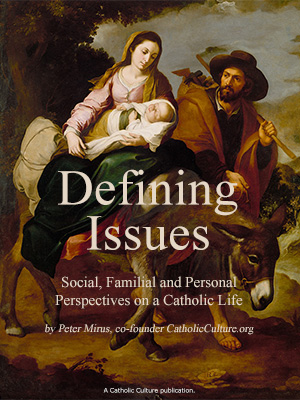The Holy Mountain of Montserrat
by Zsolt Aradi
Spain
The origin of the devotion to Our Lady at the shrine of Montserrat according to the earliest written records dates from 932, when the Count of Barcelona confirmed and renewed an endowment to the shrine made by his father in 888. This gift was again confirmed in 982 by Lothaire, King of France. Constant and unbroken tradition is that even previous to 888, an image of Our Lady was miraculously found among the rocks of Montserrat.
Montserrat itself is a fantastic mountain group, four thousand feet high, about twenty miles from Barcelona. The name, Montserrat, of Latin origin, means saw-edged mountain. It is formed by huge boulders that raise their immense bulk perpendicularly to that four thousand foot summit. Outwardly, it resembles the seemingly inaccessible monasteries seen on high Mount Athos in Greece: "Montserrat is, and will forever be, a source of deep impressions caused by the singularity of the place. There, what is material becomes cyclopean, the mysterious is turned mystical and the picturesque is promoted to sublimity." There is a story that the mountain was once a huge boulder with a smooth surface. At the time of the Crucifixion of Jesus, however, when the sun darkened, the rock was shaken to its very foundations and when light returned, the mountain had a thousand peaks.
The legend relates that the figure of Our Lady came from Jerusalem to Barcelona, and was brought into the mountains to save it from the Saracens. It is true that the Montserrat statue has oriental features, but this could well be traced to the Byzantine sculptors who were constantly employed in the West. The legend goes on to say that in the eighth century shepherds one night saw strange lights on the mountain and heard Seraphic music.
Guided by the shepherds, the Bishop of Manresa found, in a cavern, a wooden figure of Our Lady and the Holy Child. He ordered that the statue be carried into the cathedral immediately. However, the procession with the statue never reached the cathedral because, after much marching, the small wooden figure became too heavy so that the Bishop decided to accept it as a sign and left it in a chapel of a nearby hermitage. The statue remained there until a church was built on the site of the present abbey on the top of the rocks near where the statue was discovered.
Since that incident, this statue is the most celebrated, the most important of Spain; it is thirty-eight inches in height, and is known as "La Morenata"-- The Little Black Madonna. The wood is now black with age; one of its most striking features is the dignified expression of Our Lady. In her right hand, she holds a majestic orb.
Although the legendary origin of the figure may be doubted, it is an unchallenged fact that Our Lady was venerated here from the ninth century on. For over a thousand years, millions of people have knelt before this shrine, first in a smaller chapel, and since 1592 in the Basilica. All kings of Spain have worshipped at this shrine, as well as most of the saints produced by the Catholic Church in Spain, St. Ignatius Loyola, St. Vincent Ferrer, St. Joseph Calasanz and many others. There is probably no other country in the world where the veneration of Our Lady is so widespread and intimate as in Spain. The history of Spain during many centuries is the history of defense and glorification of the Church. Spain carried the Gospel to the Western hemisphere, Spaniards were the missionaries who first taught their religion on the American continent, and most of this strength and enthusiasm derived from the devotion to the Blessed Virgin.
Political strife in Spain was always more heated than anywhere else; every issue was fought with passion, regardless of the consequences. Spain produced some of the greatest saints, mystics, and also some of the most violent conquistadors and revolutionaries. During the Spanish civil war, Montserrat suffered. Many of the monks were murdered but the statue remained intact. And if we proceed back into history, we find many such instances. Napoleon's armies desecrated the holy places; other wars prior to the Napoleonic, even as far back as the wars with the Saracens, ruined the monastery several times. All the buildings existing today, including the church and the convent, are modern or modernized. But the soul of Montserrat remains unchanged. Like Chartres in France, it never fell into disuse or oblivion, and continues its activities today as it has throughout its centuries of life. The monastery is occupied by the Benedictine monks. Their performance of the divine services is world-renowned; their choir school, the Escalonia, composed of forty boys, has not lost its heavenly harmony during its four-hundred-year existence.
This item 2993 digitally provided courtesy of CatholicCulture.org







